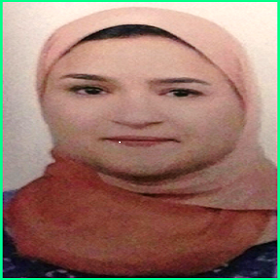Speakers

Annabel Hinderfeld
New ZealandTitle: Probiotic bacteria and pathobionts of the vaginal microbiota and their relationship with the human protozoan parasite Trichomonas vaginalis.
Abstract:
The human vaginal tract harbours a large number of microbes believed to play an important role in influencing the outcome of vaginal infections. In recent years, studies have differentiated the natural vaginal microbiota into so called community state types (CST) I / II / III / V, which are dominated by different Lactobacillus species, whereas community state type IV is defined by a species-diversified composition of the microbiota and the absence of lactobacilli. The human protozoan Trichomonas vaginalis, the causative agent of the most prevalent non-viral sexually transmitted disease is commonly accompanied by CST-IV. Interestingly, CST-IV includes species associated with another common vaginal infection, bacterial vaginosis (BV). Both infections are associated with the transmission of human immunodeficiency virus (HIV) and gynaecological complications, which likely are a result from the disruption of the cervicovaginal epithelial barrier. However, key aspects of the complex interaction between the parasite and anaerobic bacteria of CST-IV associated with BV and the protective mechanisms of lactobacilli remain elusive. We showed that T. vaginalis and BV - associated bacteria (BVB) cooperatively interact to enhance paracellular permeability of the cervicovaginal epithelium by dysregulating Tight Junctions. Our group also reported that BVB increase the adhesion properties of a previously low adherent strain of T. vaginalis (G3) and that this effect is time-and contact-dependent. In addition, we reported that the inhibitory effects of Lactobacillus gasseri (CST-II) against the adhesion of T. vaginalis to host cells is contact-dependent as well and that bacterial surface proteins are largely responsible for this inhibitory phenotype. We found that the aggregation-promoting factor APF-2 from this bacterium significantly contributes to the inhibition of the adhesion of T. vaginalis to human vaginal ectocervical cells. Our studies highlight the importance of understanding the interaction between pathogens and the microbiota and their implications on human health and disease as well as to help develop novel and specific therapeutic strategies.
Biography:
School of Biological Science, University of Auckland, 1010 Auckland, New Zealand

Reham Elkhouly
Saudi ArabiaTitle: Impact of applying antibiotic policy on antibiotic utilization
Abstract:
Our study was conducted to assess the benefit of applying antibiotic policy in ICU department during the period from July 2019 to October 2019 in aim to improve patient's outcome, cost reduction & incorporate the detection, prevention and control of antimicrobial resistance into institutional strategic goals.
Biography:
Infection Control Consultant, Health Service Centre, Egypt
Speakers

Dr Eltaib Saad
Mayo University Hospital SudanTitle: Spontaneous Splenic Rupture Complicating Severe P. falciparum Infection: A Case Report and Literature Review
Abstract:
Malaria is a parasitic life-threatening endemic disease in over 100 tropics and subtropics. Malarial splenic rupture (MSR) is a rare but potentially fatal complication of severe malarial infection and hence it deserves special attention. The estimated incidence of MSR is 2% in acute malarial infections; however, the exact incidence is largely unknown due to the substantial under-reporting. A high index of clinical suspicion is warranted for the early diagnosis as delayed or missed diagnosis can be potentially fatal . We report on a 32-year-old Sudanese male who was a resident from Plasmodium falciparum malaria-endemic area, who was diagnosed with severe P. falciparum infection as per WHO criteria [3] when he presented with an acute abdomen and hypovolemic shock due to spontaneous splenic rupture following five days of onset of characteristic febrile pattern of Plasmodium falciparum. The diagnosis of MSR was suspected clinically and confirmed by radiological imaging (ultrasonography and contrast-enhanced computed tomography (CT scan). He was managed conservatively with intravenous quinine therapy (a slow infusion of 600 mg every 8 hours) as per national malaria treatment protocol, intravenous fluids and blood transfusions and he had made a remarkable recovery after sever days. A repeat blood film smear on day 7 confirmed parasitic clearance, and quinine therapy was discontinued, and he was prescribed a 5 day course of doxycycline (100 mg once daily). A follow-up CT scan on day 10 revealed resolution of the subcapsular splenic haematoma with no residual collections. A combination of three principal factors, which ultimately result in a subcapsular haematoma formation, is thought to be implicated in pathogenesis of MSR. These factors are (I) cellular hyperplasia and venous-sinusoidal congestion leading to increased tension and stress on the capsule, (II) vascular occlusion of the reticuloendothelial cells resulting in thrombotic or ischemic events, and (III) episodic increase in intra-abdominal pressure accompanying coughing, sneezing, and laughing which add more stress on the diseased and friable spleen . In the modern surgical practice era, a non-operative management can be safely followed for haemodynamically stable patients and splenectomy is indicated for haemodynamically unstable patients with ongoing shock as a critical life-saving surgery.
Biography:
Mayo University Hospital, Westport Road, Castlebar, Co. Mayo, Republic of Ireland

